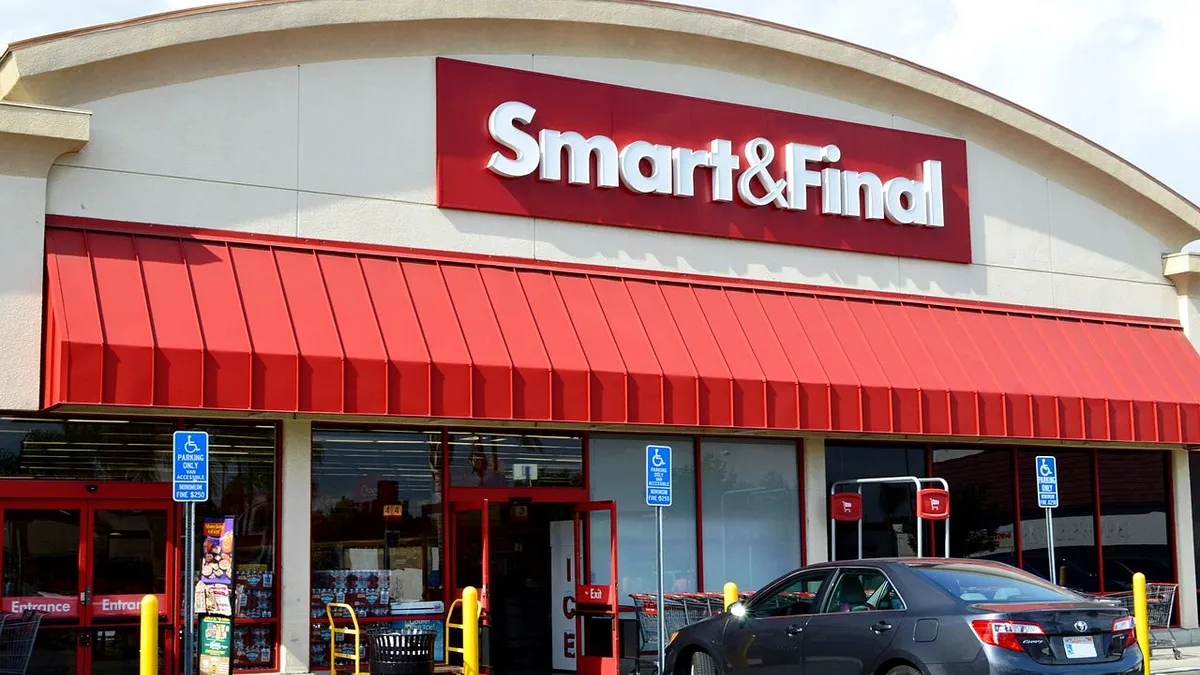Dive Brief:
- California-based Smart & Final reported net sales of 5.1% to $1.016 billion year-over-year for the first quarter of 2018. The company reported a net loss of $7.1 million or 10 cents per share, with an adjusted net loss of $2.8 million or 4 cents per share.
- Smart & Final reported comparable sales growth of 1.2%, while its Cash & Carry Smart Foodservice locations posted 5.8% comp store growth. In a conference call with analysts, executives said they were pleased with the performance of the Foodservice banner, which focuses on restaurant buyers, and plan to open four new locations in the second half of this year.
- E-commerce sales increased more than 85%, even with a fairly small customer base, and the California-based grocer has plans to grow its online capabilities in 2018. First quarter accomplishments include the start of a Shop Smart & Final mobile app, David Hirz, president and CEO said during the earnings call. He expects e-commerce and related services will increase customer traffic as shoppers begin to feel more comfortable buying fresh foods and groceries online.
Dive Insight:
Smart & Final, a value-oriented food and everyday staples retailer, faces the same challenging landscape other grocers do. With e-commerce on a small scale proving a hit, Hirz said the company will focus on technology, its mobile app and doorstep delivery on one hand, and slow the building of new stores on the other.
Last year, Hirz said the grocery chain would hold back on new store growth in 2018, fearing the effect cannibalization would have on overall sales. Smart & Final had been fairly aggressive about growth previously, having purchased 33 former Haggen stores and reopening them under the Smart & Final Extra! banner in 2016 and building 17 new stores in 2017 – 14 under the Smart & Final banner and three Cash & Carry.
Hirz said the company plans to open just three to five new stores under each of its banners this year. Slowing growth not only allows the company to focus on e-commerce and marketing, but to prioritize cash flow and debt reduction.
In addition, the store’s recent transition from the Cash & Carry Smart Foodservice banner to "Smart Foodservice Warehouse Stores" is expected to boost sales, Hirz said. “We believe this better supports our brand messaging and value proposition, and reflects how our customers view us in the market,” he said.
Maturing new stores, merchandising initiatives focused on both business and household customers also helped the company’s bottom line in the first quarter, he noted.
Like every other grocer looking to beef up online sales and draw in more customers, it remains to be seen whether Smart & Final can compete against the likes of Amazon and Walmart in the e-commerce channel. Still, it makes sense to hit the pause button on store growth as upheaval in the industry continues. Smart & Final is smart to focus on areas that make it unique – a strong in-house food and beverage brand, and its business and organization sales division. Despite lukewarm year-over-year numbers, Smart & Final executives seem willing to tweak their business model and focus on things that work.







